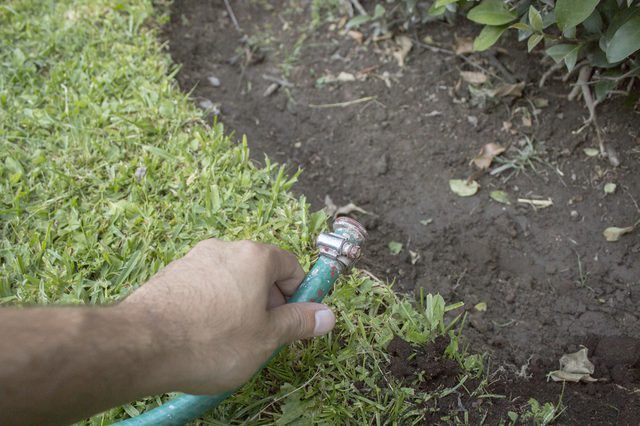Bulbs
Flower Basics
Flower Beds & Specialty Gardens
Flower Garden
Garden Furniture
Garden Gnomes
Garden Seeds
Garden Sheds
Garden Statues
Garden Tools & Supplies
Gardening Basics
Green & Organic
Groundcovers & Vines
Growing Annuals
Growing Basil
Growing Beans
Growing Berries
Growing Blueberries
Growing Cactus
Growing Corn
Growing Cotton
Growing Edibles
Growing Flowers
Growing Garlic
Growing Grapes
Growing Grass
Growing Herbs
Growing Jasmine
Growing Mint
Growing Mushrooms
Orchids
Growing Peanuts
Growing Perennials
Growing Plants
Growing Rosemary
Growing Roses
Growing Strawberries
Growing Sunflowers
Growing Thyme
Growing Tomatoes
Growing Tulips
Growing Vegetables
Herb Basics
Herb Garden
Indoor Growing
Landscaping Basics
Landscaping Patios
Landscaping Plants
Landscaping Shrubs
Landscaping Trees
Landscaping Walks & Pathways
Lawn Basics
Lawn Maintenance
Lawn Mowers
Lawn Ornaments
Lawn Planting
Lawn Tools
Outdoor Growing
Overall Landscape Planning
Pests, Weeds & Problems
Plant Basics
Rock Garden
Rose Garden
Shrubs
Soil
Specialty Gardens
Trees
Vegetable Garden
Yard Maintenance
How to Plant a Boxwood Hedge
How to Plant a Boxwood Hedge. Leafy and green year-round, boxwood (Buxus spp.) is a favorite shrub for hedges -- creating privacy, reducing noise and serving as a barrier against strong winds. One species often used in the home landscape is American boxwood (Buxus sempervirens), also known as common boxwood. American boxwood is hardy in U.S....
Leafy and green year-round, boxwood (Buxus spp.) is a favorite shrub for hedges -- creating privacy, reducing noise and serving as a barrier against strong winds. One species often used in the home landscape is American boxwood (Buxus sempervirens), also known as common boxwood. American boxwood is hardy in U.S. Department of Agriculture plant hardiness zones 5 to 6, although some varieties are hardy to zone 8. Other favored boxwoods include littleleaf boxwood (Buxus microphylla), hardy in USDA zones 5 through 9; and Korean boxwood (Buxus. sinica var. insularis), suitable for USDA zones 4 through 8.
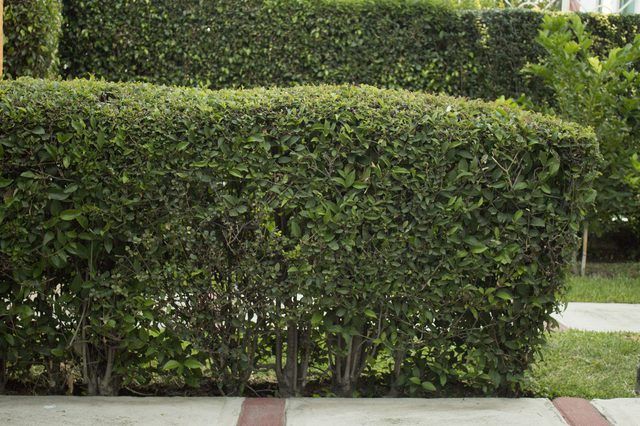
Things You'll Need
Wooden stake
String
Colored yarn or spray paint
Shovel
Garden fork or spade
Ammonium phosphate, 16-21-0 fertilizer
Mulch
Drip irrigation system, soaker hose or garden hose
Step 1
Prepare a planting location at least 3 feet from a building foundation or sidewalk. Boxwood tolerates full sunlight but prefers partial shade. It grows in nearly any well-drained soil but performs best in neutral or slightly acidic soil with a pH between 6.5 and 7.0. Fall is the best time to plant boxwood.
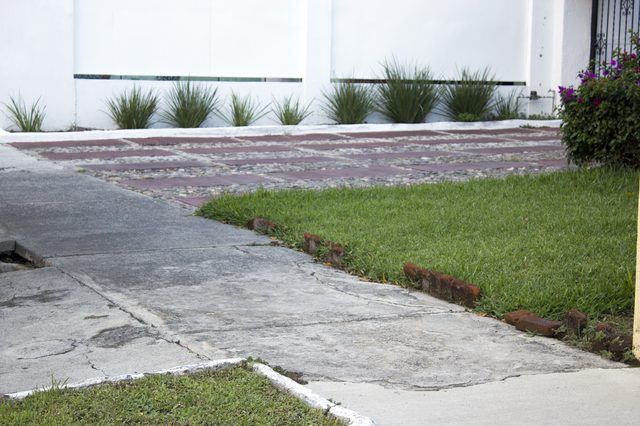
Step 2
Install a wooden stake at each end of the area to be planted, then tie a string between the stakes to create a straight line for your hedge.
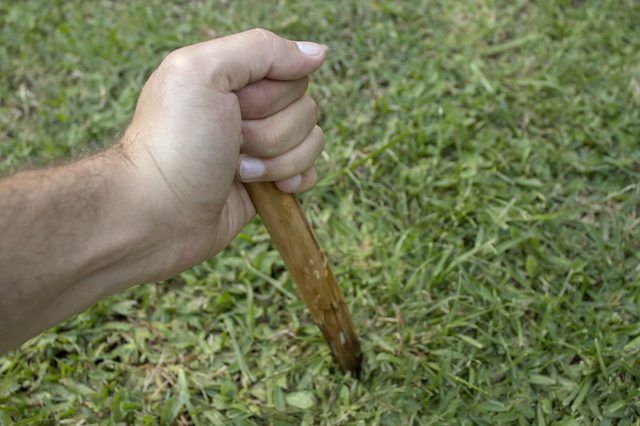
Step 3
Allow 18 to 30 inches between each plant, depending on the mature size of the variety. Double the space for an informal, untrimmed hedge. Measure carefully so the shrubs are evenly spaced, then mark the planting spots by tying pieces of colorful yarn to the string. You can also mark the planting places by placing spots of spray paint on the string.
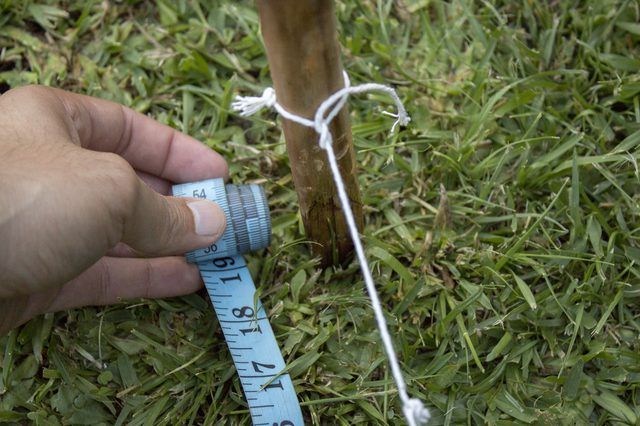
Step 4
Dig a straight trench, then pile the removed soil along the side of the trench. Make the trench at least three times the width of the average root ball. The depth of the trench should be no more than the height of the average root ball.
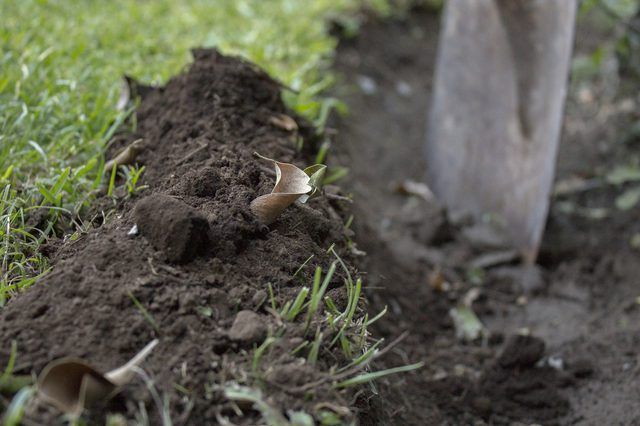
Step 5
Loosen the soil in the bottom of the trench with a garden fork or spade, then place the shrubs in the trench. Line up the top of the root balls so they are level with or slightly higher than the surface of the soil, as planting too deeply may suffocate the roots.
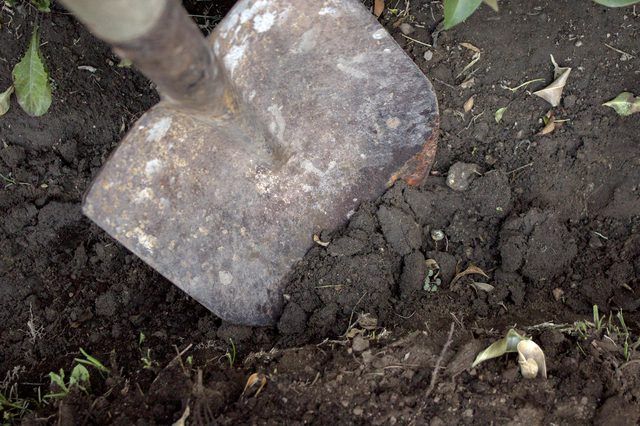
Step 6
Mix an ammonium phosphate, 16-21-0 fertilizer evenly into the removed soil. For every 3 feet of length, use approximately 1 cup of dry fertilizer.
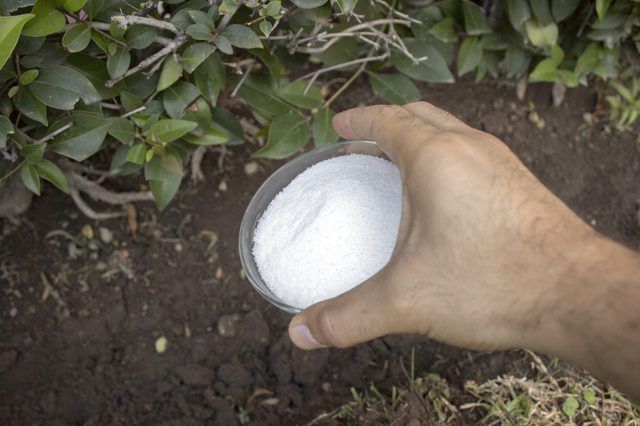
Step 7
Add removed soil back into the trench until the trench is half full. Fill the trench with water and let the water settle, then fill the trench to the top with the remaining soil. Water slowly until the soil in the trench is saturated, then tamp the soil lightly with the back of a shovel to remove air pockets. Don't pack the soil tightly.
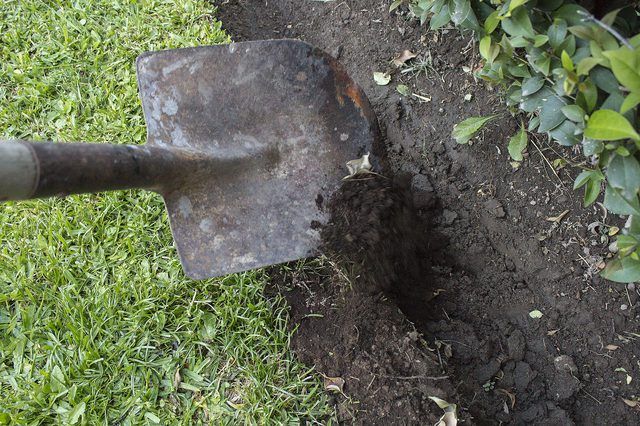
Step 8
Spread 2 to 3 inches of mulch such as dry, chopped leaves or bark around the shrubs to keep the soil cool and moist, but keep the mulch 4 to 6 inches away from the trunk. Replenish the mulch every year.
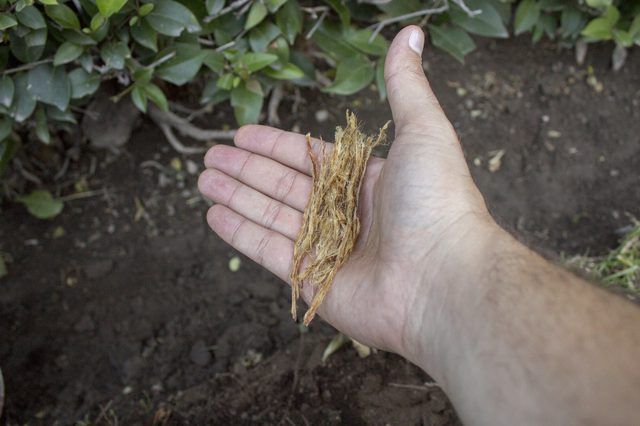
Step 9
Provide 2 to 3 gallons of water per shrub every week during warm weather. Water slowly with a drip irrigation or soaker hose, or let a garden hose trickle at the base of each plant. Always allow the top 2 to 3 inches of soil to dry between each watering to prevent rot and other fungal diseases. After the first two years, water deeply during hot, dry weather; boxwood is relatively drought-tolerant.
